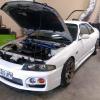R34 Pod Modification
Announcements
-
Similar Content
-
Latest Posts
-
I figured out what’s wrong. It’s something to do with the high beam wire short circuiting. When I measure the continuity with a multimeter on the headlight socket connector it gives me a continuous beeping noise when I put it on the ground socket and also on the high beam socket. On the passenger side of the car (working side), it’s only beeping when the probe is on the ground socket. Which makes sense. So that means it has something to do with the high beam power supply for the drivers side. How do I trace that? Is it the turn signal lever malfunctioning? The one that also controls the high beam and low beams.
-
By Bncr33nokout · Posted
Hey lads just finished tidying up a gtr a bought. Originally from Sydney now living in New Zealand -
Hi Guys, Looking for this piece if anyone can help out. https://tfaspeed.com/products/nissan-skyline-r33-gtr-rear-trunk-finsher-panel
-
How did you go with your problem? End up fixing it. Have a y34 aswell vq30det
-
But if I smoke test 5th cylinder it’s all ok, no leaks when I try with 2nd it’s leaking exhaust and intake, it doesn’t come from oil dip stick. so maybe when car was running poorly, rich or sth. Spark plugs were black and covered in charcoal or sth lookalike. could potential contamination make valves not seal properly? is there also a possibility that rb’s don’t have equal performing cooling passages meaning back of the engine will be hotter than front. Can this cause improper wear if engine was running under load for short time? Or carbon build up could just burnt from 4-6 and is still on 1-3? I out of my head like really. Timing is as manual crank-exhaust 47, exhaust-intake 38 at this point I thinking about give it a try and make another 500-1000km and check if anything change, if not I will most likely disassemble engine head /or whole engine and send it back to rebuild. It’s killing me
-






Recommended Posts
Create an account or sign in to comment
You need to be a member in order to leave a comment
Create an account
Sign up for a new account in our community. It's easy!
Register a new accountSign in
Already have an account? Sign in here.
Sign In Now